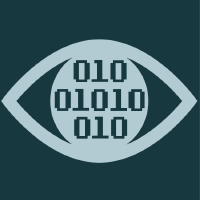Topic Editors
New Challenges in Image Processing and Pattern Recognition
Topic Information
Dear Colleagues,
The topic “New Challenges in Image Processing and Pattern Recognition” aims to provide a comprehensive and forward-looking platform for the exchange of innovative research addressing emerging issues, novel methodologies, and multidisciplinary applications in the fields of image processing and pattern recognition. As digital imagery becomes increasingly central across domains—ranging from autonomous systems and biomedical imaging to security, remote sensing, and industrial automation—new challenges continue to arise due to growing data complexity, real-time demands, and the integration of artificial intelligence.
This topic seeks contributions that push the boundaries of current techniques or offer novel perspectives on traditional problems. We welcome both theoretical developments and practical applications that demonstrate clear innovation and impact.
The scope of the topic includes, but is not limited to:
- Advanced image enhancement, restoration, and reconstruction techniques;
- Deep learning architectures and transformer models for image understanding;
- Explainable AI (XAI) and trustworthy pattern recognition systems;
- Real-time and embedded vision systems for edge computing;
- Multimodal data fusion (e.g., RGB-D, thermal, hyperspectral);
- Three-dimensional vision, shape analysis, and object recognition in complex scenes;
- Bio-inspired and physics-informed image analysis models;
- Adversarial attacks, robustness, and secure pattern recognition;
- Image processing in biomedical, environmental, industrial, and artistic domains;
- Benchmarking and evaluation metrics for image processing algorithms.
The topic encourages interdisciplinary approaches and collaborative studies that link computer vision with neuroscience, cognitive science, computational imaging, and other related fields.
Dr. Pei-Ju Chiang
Dr. Cheng-Lun Chen
Dr. Ping-Huan Kuo
Prof. Dr. Wen-Yang Chang
Topic Editors
Keywords
- pattern recognition
- image processing
- computer vision
- image analysis
- 3D vision
- stereo vision
- image enhancement
- restoration
- reconstruction
Participating Journals
| Journal Name | Impact Factor | CiteScore | Launched Year | First Decision (median) | APC | |
|---|---|---|---|---|---|---|

Applied Sciences
|
2.5 | 5.5 | 2011 | 19.8 Days | CHF 2400 | Submit |

Computers
|
4.2 | 7.5 | 2012 | 16.3 Days | CHF 1800 | Submit |

Electronics
|
2.6 | 6.1 | 2012 | 16.8 Days | CHF 2400 | Submit |

Journal of Imaging
|
3.3 | 6.7 | 2015 | 15.3 Days | CHF 1800 | Submit |

Machine Learning and Knowledge Extraction
|
6.0 | 9.9 | 2019 | 25.5 Days | CHF 1800 | Submit |

Modelling
|
1.5 | 2.2 | 2020 | 19.5 Days | CHF 1200 | Submit |

Preprints.org is a multidisciplinary platform offering a preprint service designed to facilitate the early sharing of your research. It supports and empowers your research journey from the very beginning.
MDPI Topics is collaborating with Preprints.org and has established a direct connection between MDPI journals and the platform. Authors are encouraged to take advantage of this opportunity by posting their preprints at Preprints.org prior to publication:
- Share your research immediately: disseminate your ideas prior to publication and establish priority for your work.
- Safeguard your intellectual contribution: Protect your ideas with a time-stamped preprint that serves as proof of your research timeline.
- Boost visibility and impact: Increase the reach and influence of your research by making it accessible to a global audience.
- Gain early feedback: Receive valuable input and insights from peers before submitting to a journal.
- Ensure broad indexing: Web of Science (Preprint Citation Index), Google Scholar, Crossref, SHARE, PrePubMed, Scilit and Europe PMC.





